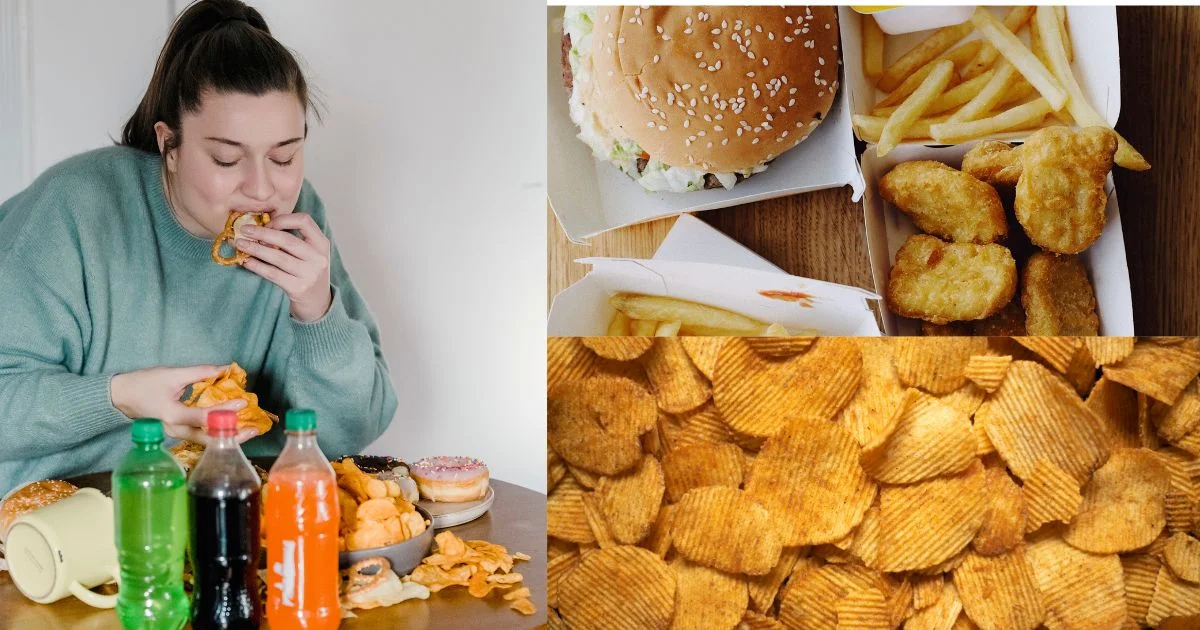The Extraordinary Science of Addictive Junk Food
In today’ s time Junk food has become an essential part of people’s life. From mouthwatering potato chips to sugary sodas and delicious candies, these items seem to have an irresistible allure.Have you ever stopped and wondered why it’s incredibly hard to say no to those irresistible and tasty treats? The allure of these goodies seems almost impossible to resist!The response lies in the phenomenal study of habit-forming unhealthy food.

Understanding the Appeal of Junk Food
The Bliss Point: A Perfect Combination
Junk food manufacturers are experts in crafting a “bliss point,” which refers to the precise combination of sugar, salt, and fat that triggers pleasure centers in our brain. When these elements are perfectly balanced, they create a delightful taste that keeps us coming back for more.
You may also like..20 Foods to Avoid for Better Sleep 6 Best Foods that keep GERD at bay
Food Engineering and Sensory Experience
Junk food is meticulously engineered to appeal to all our senses. The vibrant colors, enticing aromas, and satisfying textures play a crucial role in our enjoyment of these foods. Additionally, the sound of a crisp chip or the fizz of a carbonated drink can enhance the overall sensory experience, making us crave more.
The Job of Sugar and Its Consequences for the Mind
Sugar Addiction and Dopamine
Sugar is one of the primary reasons behind the addictive nature of junk food. When we enjoy sugary treats, our brain releases dopamine, which is often referred to as the “feel-good” hormone. This natural chemical reaction is what makes us experience pleasure and keeps us coming back for more of those delightful sweets.
The Vicious Cycle of Cravings
As we consume more sugar-laden junk food, our bodies build tolerance, leading to an increased desire for even sweeter treats. This creates a vicious cycle of cravings, making it challenging to break free from the clutches of sugar addiction.
Salt and Its Impact on Craving
Salt Addiction and the Brain
like sugar, salt also triggers the release of dopamine in the brain, and it creats feeling of pleasure and satisfaction. This neurological response drives us to seek out salty snacks, even when we’re not genuinely hungry.
The Hidden Dangers of High Sodium Diets
While a certain amount of salt is necessary for our bodies, but consuming too much salt from junk food can increase the risk of developing heart disease, a condition that can have serious consequences for our well-being.
The Role of Fat and Its Influence on Satisfaction
The Craving for Fat
Fat is a crucial component of junk food that contributes to its addictive nature. It enhances the taste and texture of these treats, making them more satisfying and indulgent.
Emotional Eating and Comfort Food
Many people turn to junk food as a source of comfort during times of stress or sadness. The emotional connection we develop with these foods can intensify their addictive qualities.
The Impact of Marketing and Advertising
The Power of Advertising
Junk food manufacturers invest significant resources in advertising campaigns that target specific demographics. They create persuasive advertisements that tap into our emotions and desires, encouraging us to choose their products over healthier alternatives.
The Influence on Children
Children, in particular, are vulnerable to the captivating advertisements of junk food. These marketing tactics can shape their food preferences and eating habits from a young age, leading to long-term health implications.
Breaking Free from Junk Food Addiction
Recognizing the Triggers
The first step in overcoming junk food addiction is to identify the triggers that lead to cravings. By understanding the emotional and situational factors that drive us to reach for junk food, we can take proactive steps to resist temptation.
Opting for Healthier Alternatives
Replacing addictive junk food with healthier options is essential for breaking free from the cycle of cravings. Incorporating nutritious and satisfying snacks into our diet can help us develop new, healthier habits.
Seeking Support
Seeking support from friends, family, or even professional counselors can be beneficial for those struggling with junk food addiction. Having a support system can provide encouragement and accountability on the journey towards healthier eating habits.
Conclusion
The extraordinary science of addictive junk food reveals that these treats are designed to create a sense of pleasure and satisfaction that keeps us coming back for more. Understanding the role of sugar, salt, and fat, as well as the impact of marketing, empowers us to make more informed choices about our diet. Breaking free from the allure of junk food requires recognizing triggers, opting for healthier alternatives, and seeking support when needed. By taking these steps, we can regain control of our health and well-being, steering away from the tantalizing grip of addictive junk food.
FAQs
Is it possible to break free from junk food addiction?
Absolutely! While it may be challenging, breaking free from junk food addiction is entirely possible with determination and the right strategies.
What are some healthier alternatives to junk food?
There are variety of healthier alternatives to junk food, such as fresh fruits, vegetables, nuts, and whole-grain snacks.
How can advertising influence our food choices?
Advertising uses persuasive techniques to appeal to our emotions and desires, influencing our food preferences and choices.
Why are children more susceptible to junk food marketing?
Children are more vulnerable to marketing because they are impressionable and have not yet developed strong decision-making skills.
Can junk food addiction lead to health problems?
Yes, too much consumption of junk food can lead to various health issues, including obesity, diabetes, and heart disease.


